Breast Cancer Fight

RENEWING CAMPUS FOR TOMORROW 8 PROFESSIONAL DEVELOPMENT 10 SHARED DREAMS TO SCRUBS 13 NEWS YOU CAN USE • OCTOBER/NOVEMBER 2023 united in the
Early Detection Saves Lives
As the colors of autumn paint our campus, October brings a timely reminder – it’s open enrollment season for medical benefits and Breast Cancer Awareness Month.
The National Cancer Institute projects that this year, roughly 43,170 Americans will die from breast cancer.
In this month’s cover story, “United in the Breast Cancer Fight,” we explore breast health and the importance of regular mammograms to detect breast cancer at the earliest-possible stage. In the spirit of personal narratives that inspire us all, we bring you the stories of four colleagues, including Laura Bushong, Director of Professional Services for Duke University Health System. Laura was diagnosed with breast cancer twice within two years.
4 United in the Breast Cancer Fight
October is Breast Cancer Awareness Month, as well as open enrollment for medical benefits at Duke. The National Cancer Institute projects that this year, roughly 43,170 Americans will die from breast cancer, which has shaped the lives of Duke colleagues. We share some of their stories.

8 Renewing Campus for Tomorrow
As part of the university’s strategic vision to transform teaching and learning, the Reuben-Cooke Building will be among nine academic and research buildings set for sustainable renewal in Duke’s long-range capital improvement plan.

11 Share Your Skills with a Digital Badge
Learning & Organization Development (L&OD) recently debuted a digital badging system that allows anyone who’s completed an L&OD course, certificate, or professional development program to display a colorful, digital indicator of the accomplishment and skills


12 Department Spotlight: Duke University Hospital Violence Recovery Program

 Laura Bushong
Laura Bushong
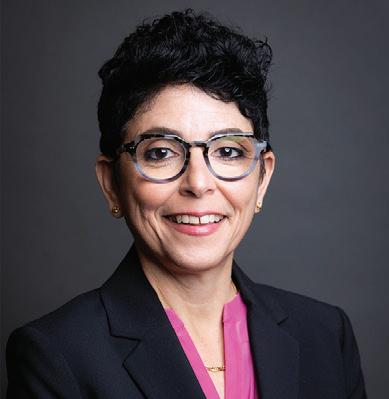
Her courage and determination exemplify the strength and resilience that resides within each of us. Reflecting on her breast cancer experiences, Laura shared, “You let go of ‘what do people think?’ You let go of ‘that’s too expensive,’ or ‘let’s not eat on the good dishes,’ or ‘let’s not have that champagne. Let’s wait for something to celebrate.’ Every day is something to celebrate.”

In a world filled with busy schedules and constant demands, Laura’s words serve as a poignant reminder that life’s true treasures often lie in the simple joys and in seizing the moments that matter.
In the pages that follow, you will find important information about open enrollment, the annual opportunity to fine-tune your valuable health coverage to best suit your needs and those of your loved ones. Additionally, our cover story offers compelling perspectives on the significance of routine screening mammograms, which are covered at no charge under our health plans and reduce the risk of dying from breast cancer by 40% or more.
As you read this issue, remember that your well-being is our priority. We hope the stories and information we share will not only inform but also inspire you to embrace every day as an opportunity to celebrate life and its many blessings.
13 From Shared Dreams to Scrubs
14 Working Toward Racial Justice: Transforming Racial Equity Research into Action
15 Drive Home a Deal
Cover: Medical personnel use a mammogram in 2022 to examine a woman’s breast for breast cancer.
Photo by Michael Hanschke/picture alliance via Getty Images.
2 WORKING@DUKE Editor’s Note LEANORA MINAI WORKING@DUKE CONTENTS 4 10 8 2017, 2014 Gold, 2019, 2015, 2013, Silver, 2016, 2009, 2007 Bronze, Print Internal Audience Publications and 2012, 2011, 2009, 2008, 2007 Gold Medal, Internal Periodical Staff Writing Visit Working@Duke daily on Duke Today: working.duke.edu Executive Director of Communications/Editor Leanora Minai (919) 681-4533 leanora.minai@duke.edu Assistant Vice President: Paul S. Grantham (919) 681-4534 paul.grantham@duke.edu Graphic Design & Layout: Paul Figuerado (919) 684-2107 paul.figuerado@duke.edu Stephen Schramm Senior Writer (919) 684-4639 stephen.schramm@duke.edu Working@Duke is published quarterly by Duke’s Office of Communication Services. We invite your feedback and story ideas. Send email to working@duke.edu or call (919) 681-4533. Contact us
BRIEFLY
Support Purposeful Community Partnerships with Doing Good Campaign
Staff and faculty of Duke University and Duke University Health System can support worthy community causes through Doing Good, Duke’s annual employee giving campaign. The campaign financially supports area schools, nonprofits, and/or the United Way of the Greater Triangle.

Employees can select the kind of need they’d like their taxdeductible donation to address by choosing among six areas: housing and neighborhoods, health, education, employment, communities, and the United Way of the Greater Triangle. Employees can donate at any time using the Duke@Work portal to make a one-time donation or set up regular contributions through payroll deductions.
“As we launch this year’s Doing Good employee giving campaign, we reflect on the incredible opportunities for Duke employees to share their time, talent, and treasure to engage in building purposeful partnerships and having a positive impact with communities,” said Dr. Tuere Bowles, Senior Assistant Vice President for Operations, Research, and Advancement at Duke’s Office of Durham & Community Affairs.
For more information, visit doinggood.duke.edu
Get Vaccinated Against Influenza and COVID-19
With the recent rise in COVID-19 cases, and with October marking the start of flu season, now is the time to protect yourself and those around you by getting vaccinated.

An updated COVID-19 booster is also expected to be available this fall, offering protection from new strains of the virus. The booster, which is covered in full for members of all Duke employee medical plans, will be available at pharmacies or through your primary care provider.
“There’s good motivation to get the updated vaccine,” Duke Professor of Medicine Dr. Cameron Wolfe, an infectious disease expert, said about the COVID-19 booster. “People should view this new vaccine like a flu shot which enables them to stay healthy. Nobody wants to go through a bunch of days feeling sick; no one wants to get Long Covid. They can avoid that with a 30-minute trip to a pharmacy. It’s that simple. The virus is here to stay. We need to do what we can to control it.”
Get Help Maintaining Your Weight During the Holidays with Festive Fit Focus
Receiving the annual flu vaccine is a condition of employment for Duke University Health System, Duke University School of Medicine, and Duke University School of Nursing employees. Flu vaccinations are strongly recommended for Duke University staff and faculty. Visit flu.duke.edu to learn how you can get a no-cost flu vaccination at locations across Duke.
The weeks between Thanksgiving and the new year can be a challenge for those hoping to maintain their weight or move toward their fitness goals. But there is help with the Festive Fit Focus program from LIVE FOR LIFE.

Formerly called Maintain Don’t Gain, the Festive Fit Focus eight-week challenge program runs from November 13 through January 7. It’s designed to help staff and faculty lose or maintain weight through the holiday season. It features weekly emails that include stress management tools, workout suggestions, and healthy lifestyle tips from LIVE FOR LIFE, Duke’s employee wellness program.
“Everybody knows that the holidays are a difficult time to stay at the weight you want to be,” said LIVE FOR LIFE Fitness Specialist Carlos Velasquez. “This program is a great way to stay motivated and on track toward your health goals and to becoming your best self.”
Throughout the program, LIVE FOR LIFE team members will supply information to help participants track their weight and offer healthy recipes, tips on how to stay active during cold weather, and plenty of encouragement.
Participants can earn LIVE FOR LIFE dollars – Monopoly-like money which can be used to buy items in the LIVE FOR LIFE store – by losing or staying within three pounds of their weight during the holiday season.
Registration opens Tuesday, October 31. Sign up at hr.duke.edu/festivefitfocus
working.duke.edu 3
See how breast cancer – the disease that affects one in eight American women –touches lives at Duke as medical benefits open enrollment begins
Breast Cancer Fight
With sushi, cake and presents, Eleanor Allen tried to make the 13th birthday of her son, Jonathan, fun. But earlier that day – on June 9, 2020 – Allen had met with her Duke doctors to plan her breast cancer fight, giving the evening an unshakable heaviness.
Weeks earlier, Allen discovered a small lump in her right breast. Over one afternoon, a diagnostic mammogram at Duke Cancer Center led to an ultrasound, a biopsy, visits with doctors and, a few agonizing days later, an invasive breast cancer diagnosis.
With a plan in place, Allen, a Duke Blood Cancer Center Clinical Research Coordinator, could finally provide answers to nervous questions from her husband and their five shaken children.

No, she may not need a full mastectomy.

Yes, her hair will fall out.
And no, with her Duke medical insurance plan, the family would not lose their house.
“My doctors told me I was going to be fine,” said Allen, 51, who underwent chemotherapy, a partial mastectomy and radiation treatments at Duke that left her cancer-free. “I just had to go with that.”
According to the American Cancer Society, roughly one in eight American women will be diagnosed with invasive breast cancer. The Centers for Disease Control and Prevention (CDC) reports that breast cancer is the second-leading cause of cancer death for women, and the leading cause of cancer death among Latino women. Black women have a higher rate of death from breast cancer than all other women.
At Duke, cancer is the top condition for staff, faculty, retirees, and dependents covered by Duke’s medical plans with breast cancer among the most common cancer diagnoses.
In addition to being Breast Cancer Awareness Month, October marks Duke’s annual medical open enrollment period, which is October 16-27. Staff and faculty covered by Duke’s plans are equipped with preventive services from world-class caregivers and annual screening mammography, which is covered in full under all Duke medical plans.
This year, the U.S. Preventive Services Task Force proposed new guidelines, advising people who are assigned female at birth and at average risk for breast cancer to begin screening at age 40, rather than 50.
“Most doctors who work specifically with breast cancer care have always recommended starting screening mammograms at age 40 on an annual basis,” said Associate Professor of Radiology and Duke Radiology Division Chief for Breast Imaging Dr. Karen Johnson. “The evidence shows that, if implemented, this is what would save the most lives because screening mammography is how you catch breast cancer before it becomes a lump. And studies show that the smaller the cancer, the less likely it is to have spread.”
The National Cancer Institute projects that this year, roughly 43,170 Americans will die from breast cancer, which has shaped the lives of Duke colleagues. Here are some of their stories.
4 WORKING@DUKE
united in the
During her breast cancer journey, Eleanor Allen, center, was surrounded by the love of her husband, Dan, and their five children.
Community for Black Women

In 1999, Valarie Worthy, a Durham County Health Department nurse at the time, was diagnosed with cancer in her left breast. While she had helped people through their health crises, experiencing her own was terrifying, leaving her unable to imagine life beyond the diagnosis.
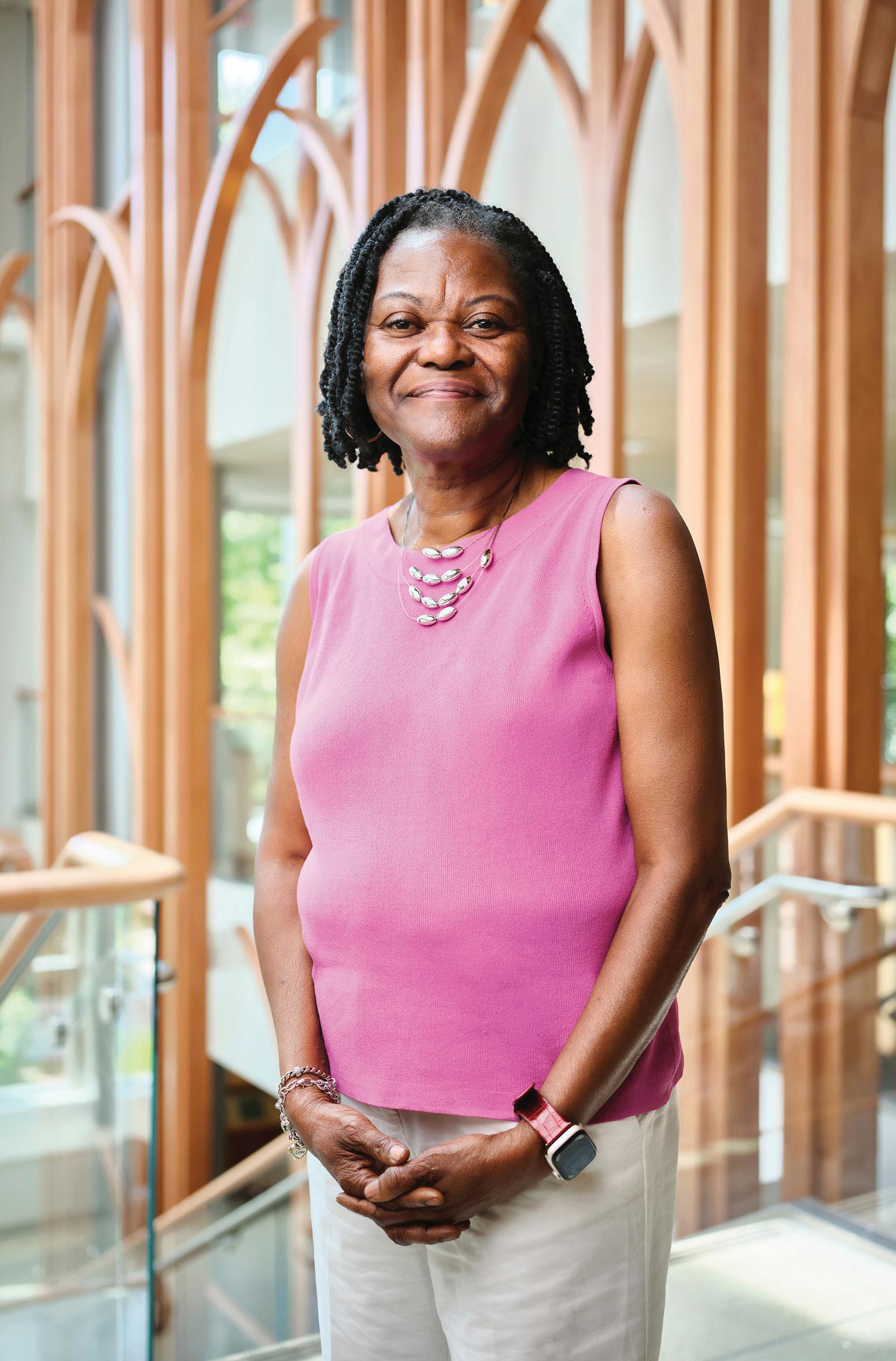
“Everything I learned in nursing school went out of the window. I was just a scared 40-year-old woman,” Worthy said.
Now cancer-free for two decades, Worthy gives patients hope as Duke Cancer Center’s Patient Navigator Manager.
“In the African American community at that time, people didn’t talk about cancer, it was like a death sentence,” she said. “I thought, if you get it, you die. Nobody talked about how you could make it through.”
As a breast cancer survivor and Duke Cancer Center Patient Navigator, Valarie Worthy inspires others who face a breast cancer journey.
Two Diagnoses within Two Years

At 52, Laura Bushong hadn't missed a yearly mammogram since age 40 and lacked a family cancer history. Yet, in March 2021, persistent soreness, redness, and an inverted nipple led her back to the doctor after an unremarkable mammogram a few months earlier.
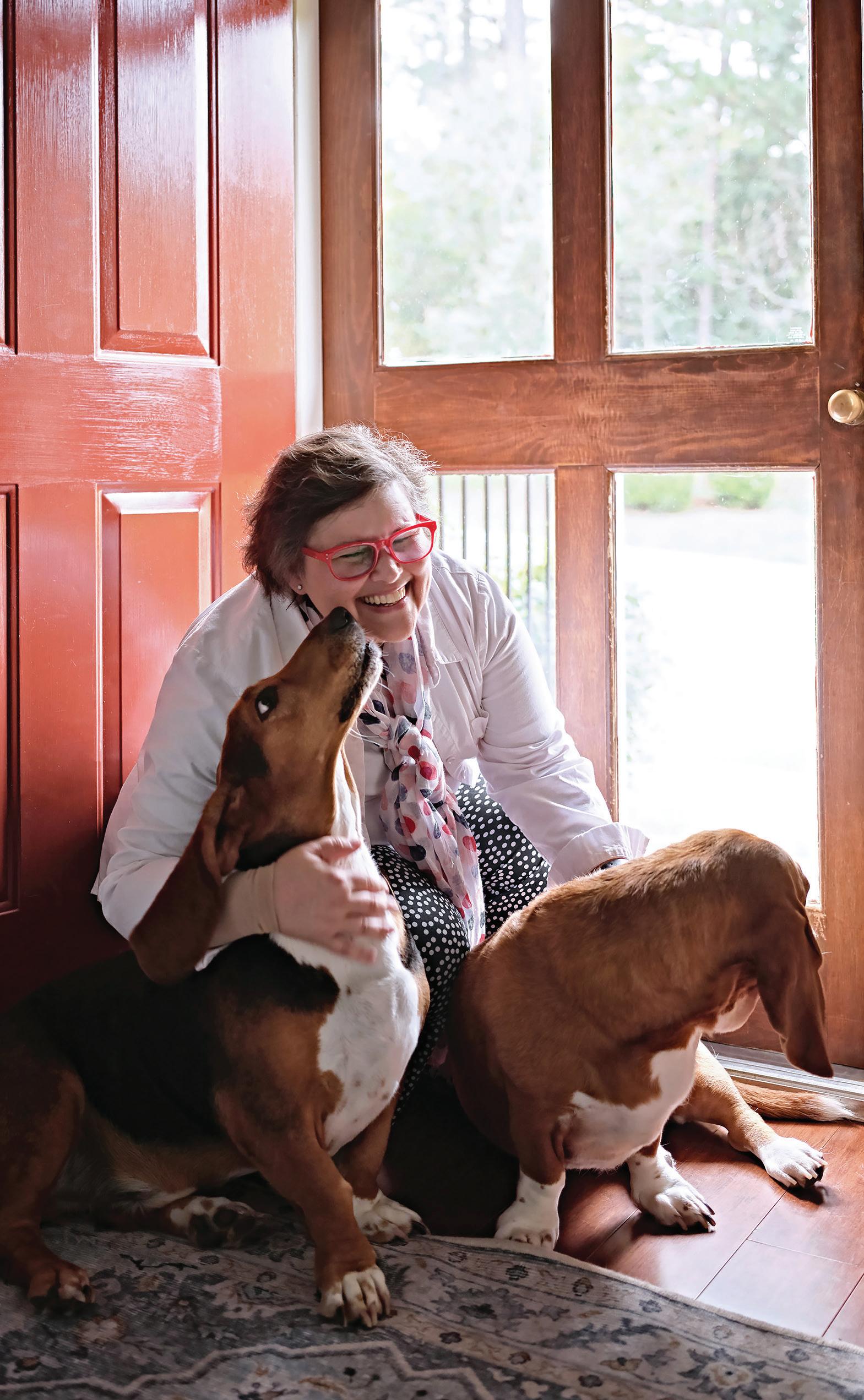
An ultrasound-guided biopsy revealed that she had stage 3 invasive lobular breast cancer, which accounts for 10 to 15% of all invasive breast cancers, according to the Breast Cancer Research Foundation.
The disease’s slender, elongated tumor shape is hard to detect with standard mammograms in women with dense tissue, such as Bushong. A few weeks later, Duke surgical oncologist Dr. Laura Rosenberger shared additional news following the removal of Bushong’s right breast.
“Based on the pathology after the surgery, Dr.
After two bouts with breast cancer, Laura Bushong has learned how to savor happy moments, especially with her dogs.
What You Need to Know for Open Enrollment 2024
A Son’s Fight
On a morning in March of 2020, Duke Associate Professor of Surgery Dr. Zachary Hartman was working from home when he got a call from his mother, Sandy Hartman.


Sandy, then 70, told him that after a recent mammogram, she’d been diagnosed with metastatic cancer that had spread to her spine, lymph nodes and beyond.
“I was completely floored,” Dr. Hartman said.

A Duke faculty member since 2012, Dr. Hartman is part of the Center for Applied Therapeutics team investigating cancer vaccines that could help patients’ immune systems attack their cancer cells to slow growth and give other treatments a greater chance of success. It’s work he was inspired to take on after his father, Randy Hartman, waged a battle against prostate cancer before he died in 2012 at the age of 67.
With a second parent facing cancer, Hartman knew that improvements in care and potential breakthroughs meant his mother’s experience didn’t have to have a bitter ending. The National Cancer Institute reports that the 5-year relative survival rate for people diagnosed with breast cancer is 90.8%.
Three years after her diagnosis, Sandy enjoys spending time with her five grandchildren – who call her “Gaga” – and relaxing with a Stephen King book.
“I keep telling my grandchildren that it’s lovely being old,” said Sandy, now 73. “You get to sleep in if you want. You can more or less choose what you want to eat, watch whatever you want to watch on television, and pick whatever activities you want to do. It’s great.’”
A cocktail of drugs has kept the cancer from growing, and in 2021, Sandy enrolled in a trial of a breast cancer vaccine that her son worked on.
“My mom is on therapies which haven’t been around very long, and has also participated in these experimental trials, and she’s alive and doing pretty well,” Hartman said. “The science has saved her. As the science and treatments progress for this generation and my kids’ generation, hopefully we can do even better and give people the ability to have more control, less pain, more choice, and longer more fulfilling lives.”
By Stephen Schramm
with contributions from Jack Frederick Photography by Alex Boerner
Schedule Your Mammogram
Mammograms are recommended for women starting at age 40. Mammograms are available at no-charge under Duke’s employee medical plans. duke.is/z/kemh
With health care expenses higher than pre-pandemic levels, Duke’s medical, dental and vision plans remain a strong value for staff, faculty and loved ones who have access to world class care at Duke University Health System.
For 2024, Duke will retain all five medical plans and coverage levels with no increases in co-pays, coinsurance, or deductibles for medical, dental or vision plans.
Insurance premiums will increase in line with industry peers and large employers across the nation due to inflation, rising prices for specialty medications, and continued higher utilization of services by people who delayed care during the pandemic.
For Duke Select, the most popular staff and faculty insurance plan, the monthly premium increase is $8 for individuals and $50 for families. Aside from a minimal increase in Dental Plan A, there are no other premium increases for dental and vision coverage.
In the past fiscal year, Duke paid $368.5 million for health care needs of roughly 73,000 covered lives, up $25.7 million from the previous year.
“Amidst the evolving healthcare landscape, it’s important to recognize the enduring value of our medical plans, which stand as gateways to outstanding care, guaranteeing access to exceptional medical resources at Duke University Health System for both us and our cherished loved ones,” said Antwan Lofton, Vice President for Duke Human Resources. “Through affordable deductibles and a commitment to dismantling barriers, we’re nurturing a culture that prioritizes well-being.”
Open enrollment for medical benefits begins at 8 a.m. October 16 and ends at 6 p.m. October 27. Eligible staff and faculty can adjust medical, dental and vision plans and enroll or re-enroll in health and dependent care reimbursement accounts for coverage effective Jan. 1, 2024.
Among Duke’s coverage highlights in 2024:
The Duke USA plan from Blue Cross Blue Shield of North Carolina offers a lowerpriced option for remote workers and people who do not live in zip codes that begin with 272, 273, 275, 276, or 277.
Preventive care visits, such as mammograms, colonoscopies, prostate screenings and more, are provided at no charge for in-network providers.
For more details, visit hr.duke.edu/enrollment2024
———————————————————
working.duke.edu 7
Through his research into breast cancer vaccines, Dr. Zachary Hartman, top, works to improve the lives of people with the disease, including his mother, Sandy.
Renewing Campus for Tomorrow
Duke focuses on maintaining the legacy of buildings, enhancing facilities and landscape
As a graduate student and later as a faculty member, Gary G. Bennett, Dean of Trinity College of Arts & Sciences, cherished the opportunity to teach and learn in the Reuben-Cooke Building, which features classrooms and offices for sociology, psychology and neuroscience.
Bennett is also excited by the facility’s future as proposed improvements will preserve the historical significance of the 92-year-old building on West Campus.
As part of the university’s strategic vision to transform teaching and learning, the Reuben-Cooke Building is among nine academic and research buildings planned for renewal in Duke’s long-range capital improvement plan.

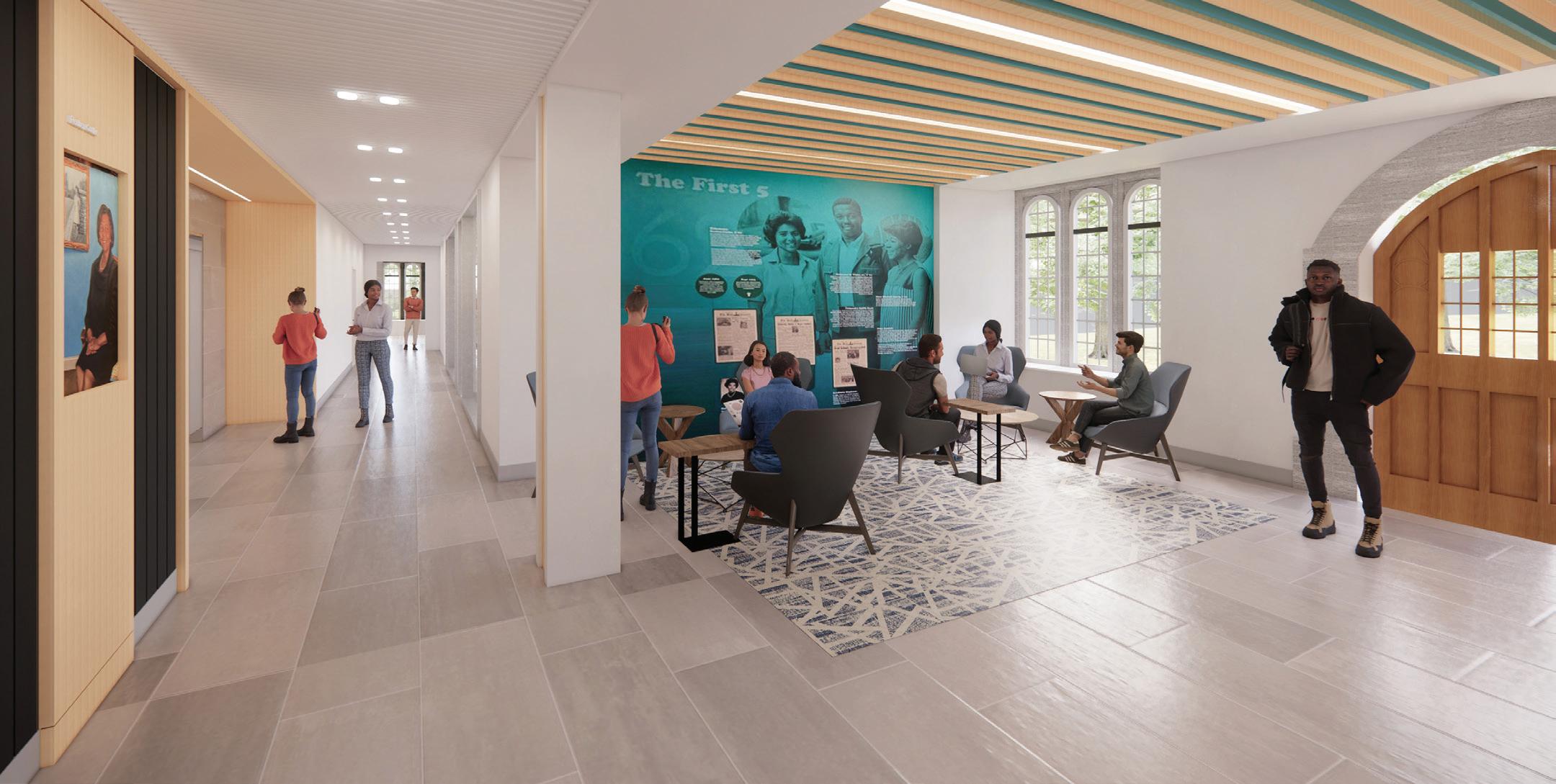
Design for the Reuben-Cooke Building renewal will begin this fall with construction beginning in the summer of 2025. The work will include replacing the roof and antiquated mechanical, electrical, plumbing and telecommunications systems. Also, modern classrooms for group learning will be added along with more airy common spaces. The lobby will feature a permanent display sharing the story of the building’s namesake, Wilhelmina Reuben-Cooke, one of Duke’s first Black undergraduate students.
“Wilhelmina Reuben-Cooke cared a lot about good instruction, a strong education and pedagogy,” said Bennett, who has a lab in the building. “It’s appropriate that we start this renewal with her building.”
In the past decade, Duke has added or expanded buildings such as the Brodhead Center, Student Wellness Center, and Wilkinson Engineering Building. Now, older buildings, and Duke’s goal of carbon neutrality, have led the university to focus on renewing existing science and academic facilities – updating exteriors, interiors and building systems – to position Duke for a dynamic and sustainable future while honoring its historical legacy. The strategy ensures campus facilities fulfill programmatic needs and Duke’s climate commitment.
“Building renewal planning was underway prior to 2020, but disruption brought on by the pandemic offered an opportunity to focus on how we can be better stewards of what we have,” said Duke Facilities Management Director of Planning & Design Adem Gusa.
Combined with similar projects making utilities more sustainable and enhancing campus landscapes, the next five years will see Duke begin to restore and modernize pieces of its campus for the long term.
Reimagining an Academic Hub
Since 1927, Lilly Library’s wood-paneled reading rooms have been charming study spaces for students on East Campus. For over 40 years, it was the Woman’s College Library and later became the East Campus Library after merging with Trinity College. In 1993, it was partially renovated and renamed Lilly Library. Since then, it has been the main academic support hub for Duke’s first-year students.
As students’ needs evolved, the functionality, flexibility and technology at Lilly has not kept up with contemporary standards.
8 WORKING@DUKE
An early rendering of the Reuben-Cooke Building’s entry with an area devoted to Wilhelmina Reuben-Cooke.
By adding spaces such as a café, Lilly Library will keep pace with the changing needs of the community.
“Students have a mix of needs, and the current library just isn’t meeting that mix,” said Joseph Salem, the Rita DiGiallonardo Holloway University Librarian.
Supported by a pair of $10 million gifts from the Duke Endowment, a comprehensive renovation of Lilly Library will begin in 2024. The project preserves the charm of spaces, such as the Thomas Reading Room, while renovations will increase space for studying, collaboration and events by nearly 15,000 square feet. There will be nearly 200 more seats at tables, study carrels and common areas, as well as new collaboration spaces, an Innovation Co-Lab maker space, and gallery for community events.
A café, like von der Heyden Pavilion on West Campus, as well as an outdoor terrace, will serve as gathering spaces.
“Students should feel that the library can grow with them,” Salem said. “At the earliest stage, we want them to get a sense of what collections look like, what technology is available, and how a library can be a vibrant social place as well as a scholarly place.”
Advancing Energy Efficiency
For community members in the Fuqua School of Business and Law School buildings, the upcoming switch from steam to hot water as a heating source may go unnoticed. But for Duke’s carbon footprint, the results of switching these and other campus buildings to this more efficient heating system will mark a quietbut-important step toward sustainability.
The hot water system supplies 26 buildings on West Campus, many of which had previously relied on steam. The transition of Fuqua, Law, and the Reuben-Cooke Building to the more efficient hot water system represents a significant move toward Duke’s goal of carbon neutrality by replacing existing systems with more efficient intelligent ones.
“This is the biggest on-campus reduction of greenhouse gases that can be done in the near future,” said Russell Thompson, Duke’s Interim Vice President of Operations and Executive Director of Utilities & Engineering Services for the Facilities Management Department.
Refreshed Heart of Campus
Spilling out from the foot of Duke University Chapel between stone buildings, the grassy expanse of Abele Quad, named for Julian Abele, the Black chief designer of Duke’s campus, is the ceremonial and physical heart of Duke’s campus.

Duke’s steam system – which uses natural-gas fueled boilers to circulate steam through roughly 23 miles of pipe – has heated campus buildings for nearly a century. Steam remains vital to medical and research buildings for disinfecting instruments, but for the rest of campus, steam isn’t the future.

Since 2014, Duke has been expanding a system of new underground pipes that sends 150-degree water to buildings for heating, humidity control and domestic hot water. Fed by two West Campus hot water plants, the system meets buildings’ needs and requires 30% less energy than steam.
Roughly a decade ago, Duke began the process of reviving the beloved space.
In that time, accessible entrances and welcoming seating were added near the Brodhead Center and Perkins Library. Improved irrigation and drainage systems were installed beneath lawns, and permeable granite pavers were added to expand newly restored bluestone sidewalks.
The final push, which finishes in December, will leave the bus circle with new pavement, granite curbs and a refreshed center island, providing a cleaner, more verdant look that aligns with the quad’s original design.
The result of the Abele Quad renewal – a similar one is planned for East Campus Quad – will be a more accessible space to serve as a timeless focal point of a busy campus.
“We’re trying to both bring back the level of quality from the original work and update it,” said Duke University Landscape Architect Mark Hough. “We’re addressing storm water in a sustainable way. We’re picking plant material that’s more appropriate to the site and better adapted to the changing climate. We’re doing things that make the space more beautiful and more functional.”
By Stephen Schramm
working.duke.edu 9
Always the heart of West Campus, Abele Quad is a welcoming and sustainable space.
Powered by two plants on West Campus, Duke’s hot water system offers a more efficient alternative to the steam system that has heated campus for nearly a century.
Get a Certificate of Excellence in Communication
Maggie Elliott, a senior program coordinator for Duke Faculty Advancement, regularly sends emails, including invitations to faculty, to participate as speakers in upcoming events.
In this context, she said, effective communication is paramount, encompassing everything from precise wording to overall tone of a message.
“I definitely need to be a clear communicator when it comes to talking with faculty and getting straight to what I need their help on,” Elliott said.
Earlier this year, Elliott enrolled in the Certificate of Excellence program in communication offered by Learning & Organization Development (L&OD), a unit in Duke Human Resources. The certificate is one of six certificates of excellence and two nationally recognized certificates available through L&OD. Each certificate is crafted to facilitate growth in skill domains such as self-leadership, technology, and supervisory excellence. Each certificate requires the completion of fourto-six courses within three years of application submission.
“Communication is the fundamental skill we need to be successful at work,” said Senior Learning & Organization Development Consultant Don Shortslef, who leads the communication certificate program.
The communication certificate, which focuses on building emotional intelligence, requires five courses. Here’s a look at several of them.
Communicating with Diplomacy and Tact I and II
Earlier this year, Carlos Lewis, an orthopedic technologist, took “Communicating with Diplomacy and Tact I.” He gained a valuable insight: facial expressions and body language are on par with the importance of spoken words.
This lesson prompted him to become more mindful of smiling, establishing eye contact, and cultivating a sense of relaxation before entering the room of pediatric patients.
“People listen to your actions more than what you say,” Lewis said.
The course, offered in two parts, teaches participants how to have meaningful interactions in professional settings.

“You have to create an environment where people feel welcome to share their honest thoughts,” said Shortslef, who teaches the course.
Conflict Resolution
Danielle Woods, team lead and human resources specialist for Nursing Payroll Services, took Conflict Resolution this year to learn what to do when a miscommunication or misunderstanding arises.

The course uses the Thomas-Kilmann Conflict Mode Instrument (TKI) to assess five modes for responding to conflict, from avoidance to confrontation.
“The class will help anyone take a look at themselves and understand other people and how to think from a different perspective,” Woods said.
Personality & Effective Communication
The class highlights the importance of communication for building positive and productive working relationships and uses the Myers-Briggs Type Indicator assessment to verify your personality type.
By the end of the course, participants have greater awareness of the impact of their personality type when communicating with others.
 By Jack Frederick
By Jack Frederick
Learn more: hr.duke.edu/professional-development/certificates-excellence
Professional
10 WORKING@DUKE
From left to right, Learning & Organization Development’s Keisha Williams and Marjorie Siegert celebrate with Tomeka Everett, an Administrative Specialist at Duke, who received a Certificate of Excellence. Photo by Les Todd.
Development
Display Your New Skills with a Digital Badge
New badges showcase accomplishments through Duke’s Learning & Organization Development


Since joining Duke in 2005, Marissa Lane has embraced professional development opportunities through Duke Learning & Organization Development (L&OD). Lane, the Business Manager for the Department of Religious Studies, has taken courses on navigating challenging personalities, coaching colleagues, and recently earned the Management and Leadership Certificate of Excellence.
“It’s not just helped me professionally, but I can incorporate these skills into my everyday life,” Lane said. “These opportunities help you become very aware of how you can easily help people.”
Lane and others who benefit from L&OD’s teachings have a new way to share what they’ve learned with a system of digital badges that can be easily displayed in email signatures or LinkedIn profiles, signifying professional development accomplishments.
L&OD, a unit in Duke Human Resources, recently debuted the badging system that allows anyone who’s completed an L&OD course, certificate, or professional development program to display a colorful, digital indicator of the accomplishment and their skills.




Prior to the COVID-19 pandemic, employees who completed professional development programs received printed certificates. But with added virtual programming, paper certificates had to be reimagined.
L&OD developed the digital badging system with Canvas Credentials, formerly Badgr. It offers digital badges for completing any L&OD professional development and technical course, any Guide to Managing at Duke, any Certificate of Excellence, and any specialized program such as Front Line Supervisor, Foundational Skills, the Duke Management Academy or the Duke Leadership Academy.
“This is a neat way for people to show their commitment to their development and their investment in their growth,” said L&OD Assistant Director for Instructional Design Abby Farrell, who helped develop the badging system. “It’s a way to get people excited about learning.”
To get a digital badge, employees can visit duke.badgr.com to create an account with their Duke NetID. Their account will automatically show badges for courses, certificates and programs completed in 2023. To request a badge for a course, certificate or program prior to 2023, fill out an online form at duke.is/4/pvr2.
Inside their account, users can find links to add badges to their email signature or LinkedIn profile. They can use built-in buttons to share accomplishments on Facebook, Twitter, Instagram and LinkedIn, or print a badge in the form of a certificate.
“The beauty of this is that, as we’ve become virtual, people can automatically receive their badge and share their accomplishment,” said Keisha Williams, Assistant Vice President for L&OD. “Right away, they can put it in their email signature, they can put it on LinkedIn, and people know they’ve gone through a verified, specific journey of learning.”
By Stephen Schramm
Learn more about badges through L&OD at duke.is/b/hrqm
working.duke.edu 11
Duke University Hospital Violence Recovery Program
Unit: Duke University Hospital
Violence Recovery Program
Years at Duke: 1
Number of employees: 3
About the program: Last year, 393 gunshot wound victims, mostly men and juvenile males of color, were brought to the emergency department at Duke University Hospital.
Duke University Hospital launched the Duke Violence Recovery Program in September 2022 to support the needs of patients admitted to the Level 1 Trauma Center. Spurred by $375,000 from the federal American Rescue Plan, the hospital-based violence intervention program became the fifth of its kind in North Carolina, reframing violence as a preventable healthcare issue.
Led by Duke program manager Uzuri Holder and program coordinators Keith Patterson and Demetrius Lynn, the team supports residents in the city of Durham and Durham County who have experienced violence, with the goal of preventing readmission to the Duke Trauma Center.

Intensive case management starts in the emergency department with the patient and family members. Throughout a hospital stay, program staff meet with the patient and family.
“We’re a friendly face coming in and being helpful,” Patterson said. “Helping to get where they need to go, reassuring them and letting them know they have support inside the hospital.”
Team members follow residents between the ages of 15 and 40 for up to one year. During that time, case management support includes tackling concerns around housing, transportation, mental health, employment, life skills and more.
“The program is based on the premise of helping them complete the goals they set forth,”
Holder said. “We want everyone to be healthy mentally, physically and accomplish everything they set forth and be in a space or place that is safest and healthiest for them.”
How the program makes
a difference: In its first year, the Violence Recovery Program has engaged with roughly 160 patients, mostly gunshot wound victims. Program staff are a key part of the multidisciplinary team, bridging patients and caregivers.
The lived experiences of staff also help establish rapport.
In 1993, the program’s own Demetrius Lynn, a Durham native, survived a shooting in his hometown. At 20 years old, he was rushed to then-Durham Regional Hospital, where doctors saved his life.
During his three-month hospitalization, he underwent rigorous physical therapy. His family’s unwavering support and encouragement were vital in his recovery. Recognizing the importance of a strong support system, he now dedicates himself to assisting others through the program.
“Imagine being in a situation like that and you have no family support,” said Lynn, now 50. “You have no aspirations or hope of recovery. That’s when the program can come into play to fill the void.”
What’s ahead: During the past summer, the program extended its services to include individuals who are victims of stabbings. The team aspires to broaden the program’s reach to encompass more programming.
“The next step is really to support all victims of violent crimes,” Holder said. “Right now, we’re at capacity for what we can handle, but that’s the goal.”
By Jack Frederick
Send your spotlight ideas by email to Working@Duke.edu Duke Spotlight
From left to right, Duke University Hospital’s Violence Recovery Program staff Keith Patterson, Uzuri Holder and Demetrius Lynn gather in their offices in Duke Clinic. Photo by Jack Frederick.
12 WORKING@DUKE
From Shared Dreams to Scrubs
Mother and daughter inspire each other to become Duke caregivers
During the nursing program graduation ceremony at Roxboro’s Piedmont Community College, new graduates receive a special pin that family members or mentors affix to new white uniforms.
Melonie Castle, 50, who completed the two-year associate degree in May to become a clinical nurse, couldn’t wait for this moment. In front of nearly a dozen family members at Roxboro Baptist Church, Castle beamed as her daughter, Breezy Morris, fastened the pin and wrapped her in a tight embrace.

“I love you, Mama,” whispered Breezy, 25.
For both women, the moment was especially sweet. After years of work and sacrifice, Breezy, a Duke University Hospital nurse since 2020, and her newly graduated mother, Melonie, had both realized dreams of becoming nurses.

Growing up in Virginia, Melonie was fascinated by the idea of caring for patients. She was inspired by the selfless nature of nurses. A nursing career was always a goal, but as Melonie became a mother and children became a priority, it never seemed attainable.
“Life just kept happening,” said Melonie, a clinical nurse in the Duke Regional Hospital Emergency Department since June.
In 2013, Melonie, then a single mother of four, began her career at Duke by joining the Duke Regional Hospital staff as an emergency department technician. She found the work of helping doctors and completing tasks, such as drawing blood and connecting patients to EKG monitors, immensely satisfying.
She became a certified nursing assistant not long after and served in Duke’s float pool. But with three children in school –ranging from elementary school to high school – she couldn’t pursue a nursing degree.
Meanwhile, her daughter Breezy saw the validation Melonie found in the challenging-but-worthwhile healthcare work. That led Breezy to pursue a bachelor’s degree in nursing science from UNC Greensboro, which she earned in 2020.
“She was always my inspiration,” said Breezy, who’s in her third year as a pediatric nurse at Duke University Hospital. “She wasn’t a nurse, but she had been on that road for a long time. That shaped the path I wanted to go down.”
Breezy said her mother encouraged her while she was at UNC Greensboro. With experience working in a range of hospital settings, Melonie helped Breezy understand emergency department care and COVID protocols.
In 2021, the roles reversed, and Melonie began her quest for a nursing degree with Breezy providing support. Melonie earned her degree in two years, balancing responsibilities at Duke and at home.
And at May’s graduation ceremony, when Melonie’s daughter and fellow Duke nurse presented her with her pin, everything had fallen into place.
“She just looked so joyful,” Breezy said. “We’ve seen our mom go through a lot and sacrifice a lot. To see her truly happy was so rewarding.”
By Stephen Schramm
Receive monetary rewards and prizes by referring talent to Duke Health: duke.is/p/3f74
working.duke.edu 13
Duke nurses Breezy Morris, left, and her mother Melonie Castle, right, share a passion for patient care.
Toward Racial Justice Transforming Research on Racial Equity into Action
A grant funds Duke faculty’s creative projects exploring how race shapes life

Duke student Ezra Belgrave held a blue handbag, her fingers following delicate metal wires laced across the front.
“There’s a short-circuit here somewhere,” Belgrave said, searching for why tiny lights on the bag designed by one of the Durham high school students in a summer learning program wouldn’t glow. “This won’t be too hard to fix.”
Belgrave, a senior computer science major, was helping students at Hillside High School in Durham create handbags featuring circuits and lights as part of an early phase of a Duke research project, “Inspiring the Next Generation of STEM Learners.”

Led by Electrical & Computer Engineering and Computer Science Professor of the Practice Shaundra Daily, the project partners with local youth enrichment program Inspiring Minds to let Duke undergraduates test innovative ways to nurture curiosity about science and technology in middle and high school students from underrepresented minorities.
“It’s really rewarding,” said Belgrave, who is Black and Latina. “I see myself in these students. I love that they get to express their personality, their culture and things they like within their tech.”
As part of Duke’s effort to address racial equity, “Inspiring the Next Generation of STEM Learners” is funded through a Duke grant program that dates to the university’s anti-racism commitment amid 2020’s nationwide awakening about systemic racism. The Duke Endowment provided Duke University with $16 million for recruiting and retaining diverse faculty, creating courses and student research opportunities about race and
inequality, and funding new faculty-led research projects exploring how racial and social inequality shapes life in Durham and North Carolina.
“We need to leverage the resources and expertise we have, not just on the basic research side, but also the applied side, where we try to use innovative research for the benefit of the community,” said Vice Provost for Faculty Advancement Abbas Benmamoun.
In 2021, the first round of grants went to 17 projects studying race, racism and the American South. Projects included collecting oral histories of environmental racism, sharing the stories of Durham’s Black burial grounds, and more. Last year, 18 projects were funded looking into how racial inequality manifests in areas such as North Carolina’s foster care system, jury pools, housing market and health care.
This year’s grants funded community-engaged research projects addressing educational inequality. “Inspiring the Next Generation of STEM Learners” was one of seven projects chosen by representatives from Duke Faculty Advancement, the Duke Office of Durham and Community Affairs, Duke Interdisciplinary Studies and the Durham community.
“The ideas our students will come up with will have a tie to the community and a social impact component,” said Duke Research Scientist Alia Carter, who is helping oversee the project with Duke Associate in Research Sandra Roach. “I want them to think of STEM as a superpower, and we’re using it to benefit the community.”
By Stephen Schramm
Is there work in your area that advances racial equity? Tell us about it: hr.duke.edu/sendnews
14 WORKING@DUKE
Duke student Ezra Belgrave, left, helps Durham high school students refine the circuitry of their high-tech handbags as part of the “Inspiring the Next Generation of STEM Learners” research project. Photo by Stephen Schramm.
Drive Home a Deal
Several car dealerships offer discounts for staff and faculty
Debbie Wolf loved her red Chrysler Town & Country minivan.
It was the perfect car for raising her four kids — Jared, Kiera and 9-year-old twins Liam and Ryleigh. The minivan helped the family move from Long Island to North Carolina in 2016 and carried them through carpool pickups, soccer practices, grocery store runs and high school graduations.
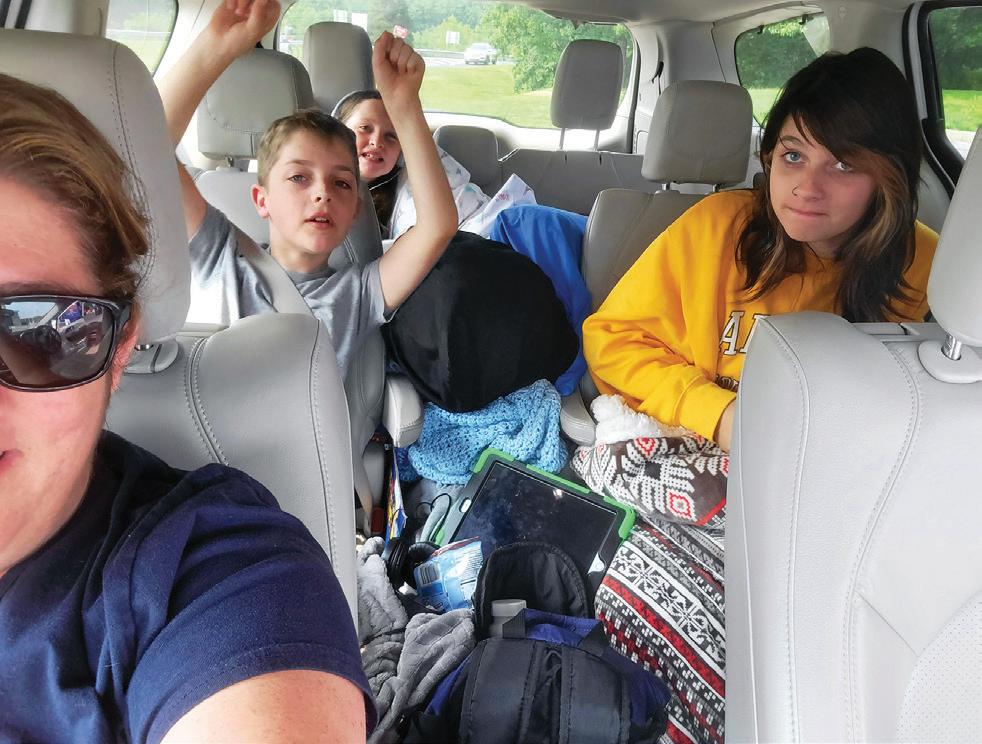

But in 2021, Wolf, an inpatient case manager at Duke University Hospital, needed a new vehicle to meet the needs of her family. So, she turned to PERQS, the Duke staff and faculty discount program.
Using a discount through the DaimlerChrysler Affiliate Rewards, Wolf saved $2,000 when she purchased a white 2021 Chrysler Pacifica at Bleecker Chrysler, Dodge, Jeep, Ram in Dunn.
The 1% below factory invoice deal at participating Chrysler dealerships is among the automotive offers for staff and faculty through the PERQs program. BMW, Volvo, Ford, GM, Mark Jacobson Toyota, and other dealership offer savings.
For the Wolf family, the savings allowed them to purchase the minivan and a used Dodge Ram truck for Wolf’s husband, Kurt.
“Every little bit helps,” she said. “Knowing I have this perk of getting a discount was super helpful. If we ever had to go back and buy another vehicle, I would absolutely go back to see which dealerships are listed to use that benefit again.”
The Chrysler Pacifica has plenty of features, including three rows of spacious leather seating, USB plugins, dual TVs, heated seats and storage that have made frequent road trips to New York to see family more comfortable.

Here’s a look at a few other dealer discounts:
Mark Jacobson Toyota
Mark Jacobson Toyota in Durham offers $200 off used vehicles from lowinterest pricing.
Contact Christopher Johnson at 919-475-1242 or CJohnson@ MarkJacobsonToyota.com for an appointment.
A-Plan by Volvo
The A-Plan by Volvo offers bonus incentives that can be combined with local deals to purchase or lease new vehicles.
Eight dealerships within 100 miles of campus participate in the program. To access deals, which vary by vehicle model and year, register for an account using code QS092 at aplanbyvolvo.com.
Ford Motor Company
The Ford Motor Company offers select deals for staff and faculty, retirees and household members through its Partner Recognition X-Plan Vehicle Pricing Program.
Use code DUKEU to sign up for an account that gives access to special pricing. Special offers vary and are subject to change. Learn more at duke.is/v/wg58
By Jack Frederick
working.duke.edu 15
Debbie Wolf takes a selfie with her kids in their Chrysler Pacifica. Photo courtesy of Debbie Wolf.
Visit hr.duke.edu/discounts for a full list of savings at area businesses and vendors. Your NetID and password may be needed to access deals
The Wolf family with their Chrysler minivan during a summer road trip to Long Island, New York. Photo courtesy of Debbie Wolf.
Save on Duke



Presents Staff and faculty save 15% on Duke Arts Presents performances during the 2023-24 season.



Duke’s First Century Help identify milestones and staff and faculty who have contributed to Duke’s first century.




7

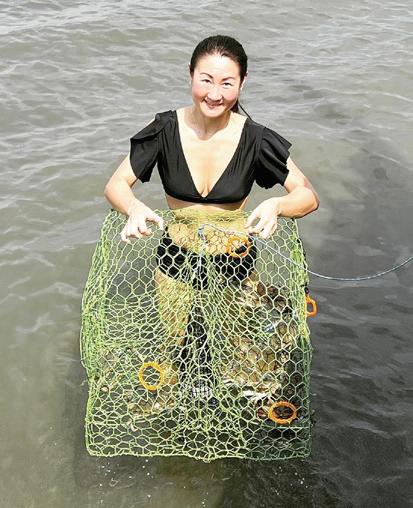




online
News You
Use:
Go
to discover more
Can
Arts
Ways to Get Fit
Share story ideas by emailing working@duke.edu Connect with Working@Duke on Social Media Duke University Office of Communication Services 705 Broad St., Durham, N.C. 27708 DUKE SOCIAL What you’re sharing online Instagram instagram.com/workingatduke Facebook facebook.com/WorkingatDuke (X) Twitter twitter.com/WorkingatDuke -charliecbritt Wallace Wade Stadium, Duke University Lovely weekend with friends at Emerald Isle Nothing better than awesome friends and fresh steamed crabs that you caught! @WorkingatDuke #emeraldisle #beach Akiko Chiba, MD, FACS @chibaAkiko _charliecbritt Monday night was a great win for the Blue Devils!!!
Connect with resources through Duke’s employee wellness program.






 Laura Bushong
Laura Bushong





















 By Jack Frederick
By Jack Frederick




























